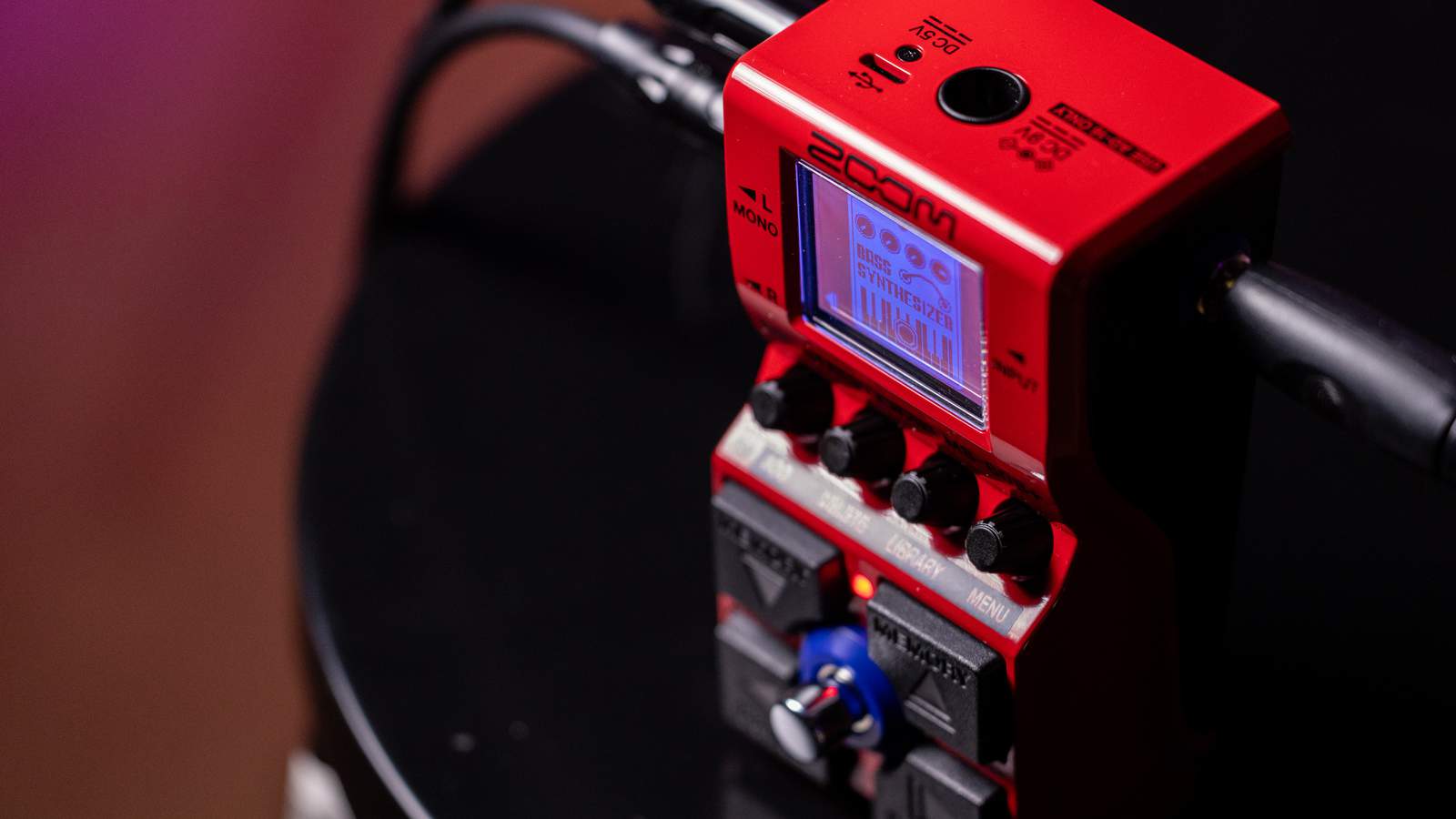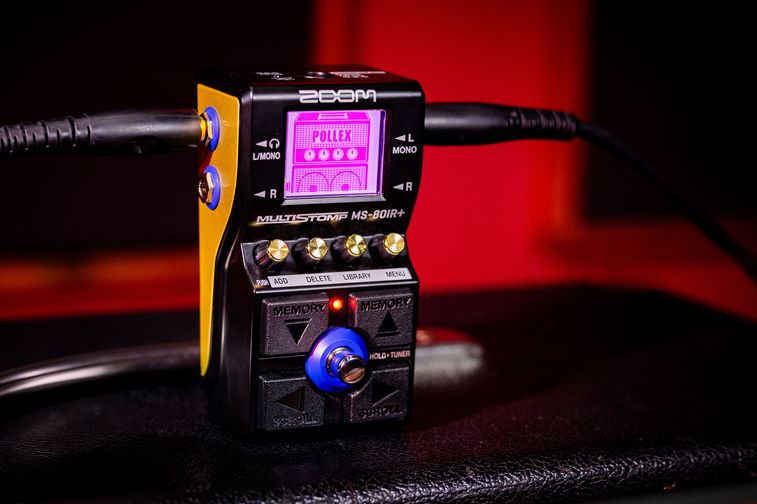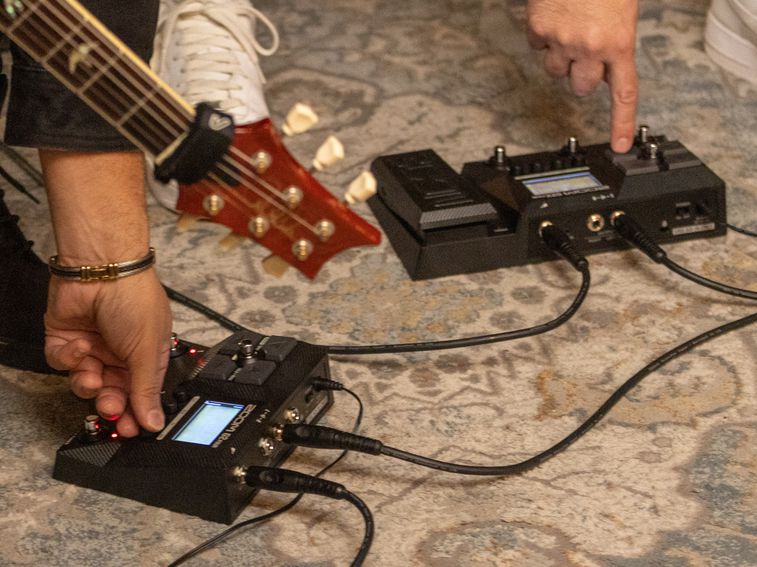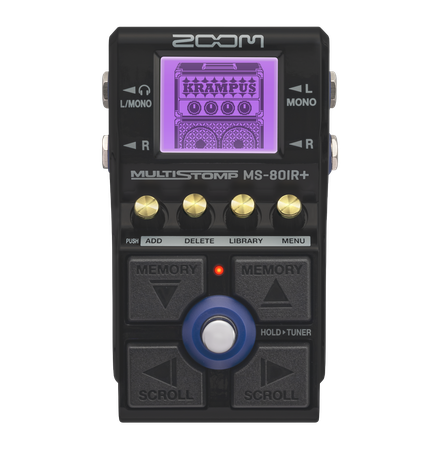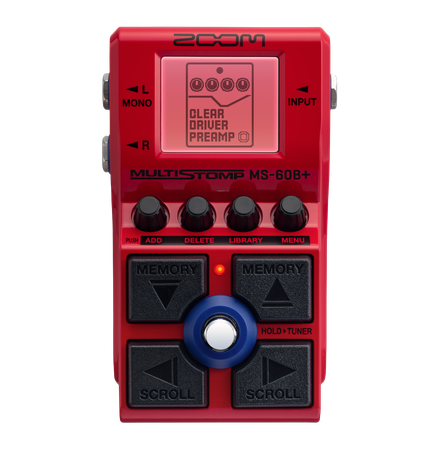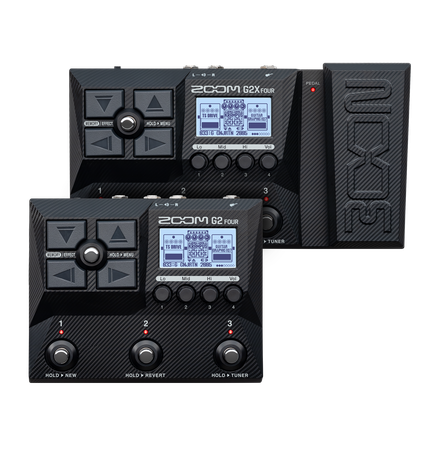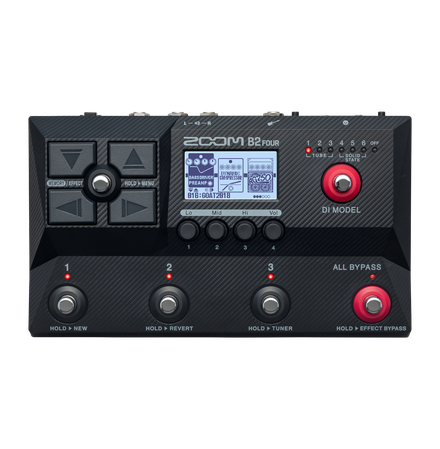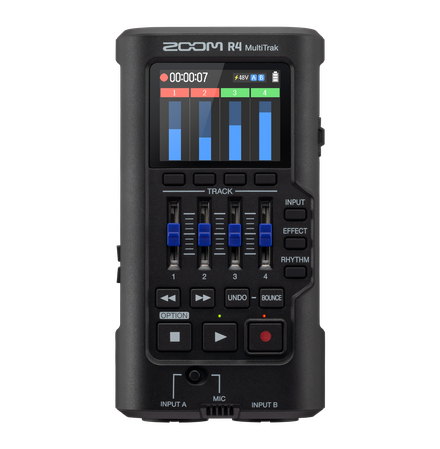
The Zoom MS-60B+ Multistomp for Bass
Traditional Impulse Responses and How They’re Made
Impulse responses (IR’s) are used in digital processing to recreate the sound and feel of playing through a traditional amp and cabinet. To create an IR, you first need to record a test signal through the desired cabinet. A mic or mics are placed in front of the cabinet for the recording. Different microphones, placements, and volumes will result in different IR characteristics. Most IR’s are recorded at a single volume and then loaded into an effects processor for application.

The Zoom G2X Four and the G2 Four MultiEffects Processors
Why Multi-Layer IR’s
Zoom’s innovative Multi-Layer Impulse Responses are captured at THREE different volumes. This allows the IR’s to be blended and activated based on the volume of the instrument. This more faithfully recreates the tonal characteristics and feel of playing through classic amps and cabinets. The result is a realistic tone, not possible with traditional IR’s.
HOW IT WORKS

Zoom captures it’s Impulse Responses at multiple volumes allowing blending based on the volume of the musicians instrument
